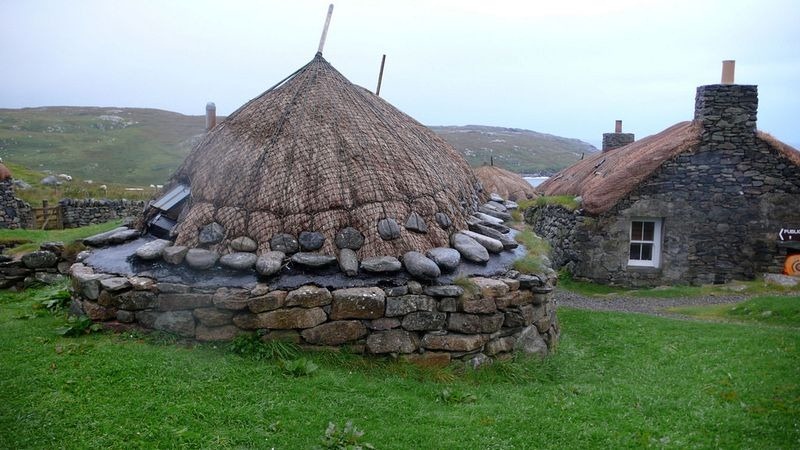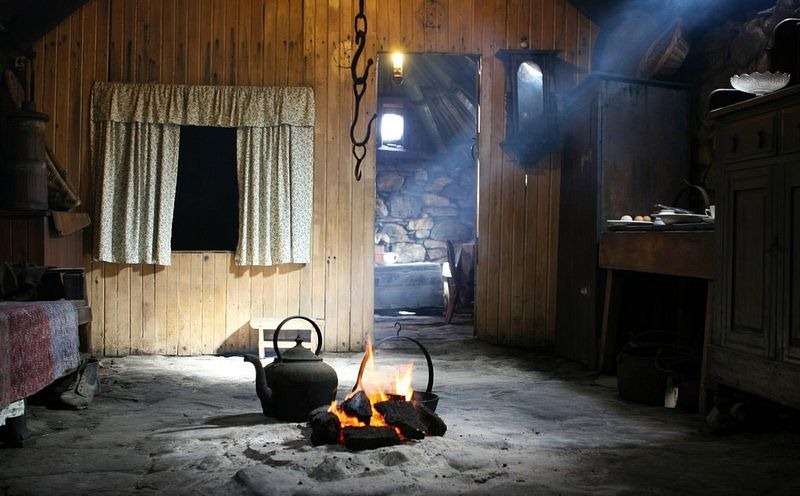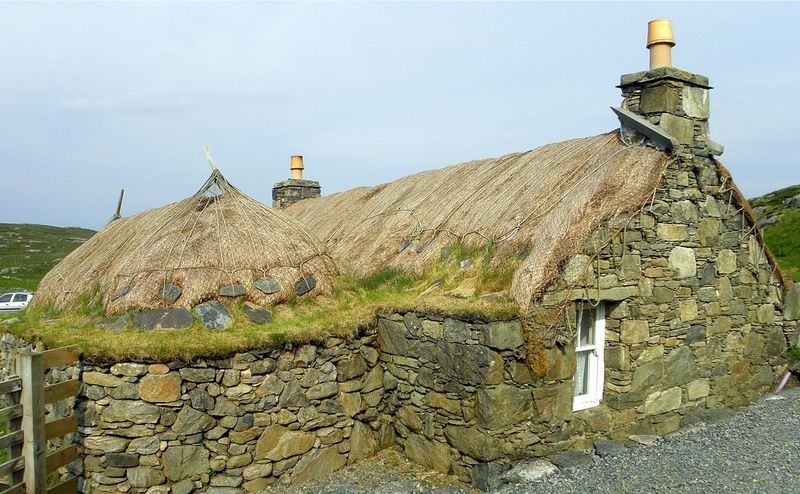Hundreds of years ago the highlands of Scotland and Ireland were dotted with a type of dwelling called blackhouses. These were long narrow buildings, often laid in parallel to other blackhouses, with dry-stone walls and thatched roofs rendered black with soot. The smoke came from a peat fire that was lit at all times in the center of the kitchen and living area. As appalling as it sounds, the houses had no chimneys and very small windows leading to a suffocating accumulation of smoke inside. The smoke escaped through the porous roof, slowly blackening the turf or straw in the process.
The smoke killed bugs living in the roof. Smoked thatch was also considered an excellent fertilizer. So every year, the roof was stripped down and the blackened thatch used to fertilize their fields, while the roof was rethatched to supply for next year.

Blackhouses in Gearrannan, Isle of Lewis. Photo credit: Iñaki Barrutiabengoa/Panoramio
Smoke wasn’t the only thing these people lived with. They also shared their living space with animals. People lived at one end and the animals lived at the other with a partition between them. Both animals and the human occupants shared the same door. The floor was usually earthen, at least on the side of the animals, and there was usually a drain for some of the animal waste. Part of the blackhouse was also used as barn for storage and processing of grain and other products.
Although it may appear so, blackhouses were not named because of their smoke-filled rooms and black roofs, but because they were compared to new houses that were being built in the late 1800s. These houses were built with stones and lime mortar rather than stone and earth which presented such a contrast that people started calling them “white house”. The term “black house” was then applied to the old houses. The new “white houses” were built as a result of stricter heath regulations that required separation of humans from their livestock and animals.
Unbelievably, some of the blackhouses were still inhabited until the middle 1970s, although later construction had fireplaces and chimneys.
One of the best places to see blackhouses is at the Isle of Lewis, in the Outer Hebrides. In the village of Gearrannan, there are several restored blackhouses as well as a museum. In the village of Arnol too, there are ruins of blackhouses everywhere. Few of them are still roofed. One blackhouse has been carefully preserved since the occupants moved out in the 1960s, and turned into a museum. The building, complete with internal fittings, gives a very good impression of what is would have been like to live in a blackhouse.

Photo credit: Colin Campbell/Flickr

A “white house” at Isle of Lewis. Photo credit: Kristi Herbert/Flickr

Photo credit: CaptainOates/Flickr

Photo credit: Andrew Bennett/Flickr

The interior of a restored blackhouse in Arnol. Photo credit: marcus_jb1973/Flickr

The interior of a restored blackhouse in Arnol. Photo credit: Neil Wilkie/Flickr

An old Gearranan blackhouse loom shed. Photo credit: Colin Campbell/Flickr

Ruins of an old blackhouse in Arnol. Photo credit: Tdecember/Wikimedia

Photo credit: IrenicRhonda/Flickr

Photo credit: IrenicRhonda/Flickr

Photo credit: Mark Stainton/Flickr
Sources: Historic Scotland / Undiscovered Scotland / Wikipedia / www.isle-of-lewis.com



Comments
Post a Comment